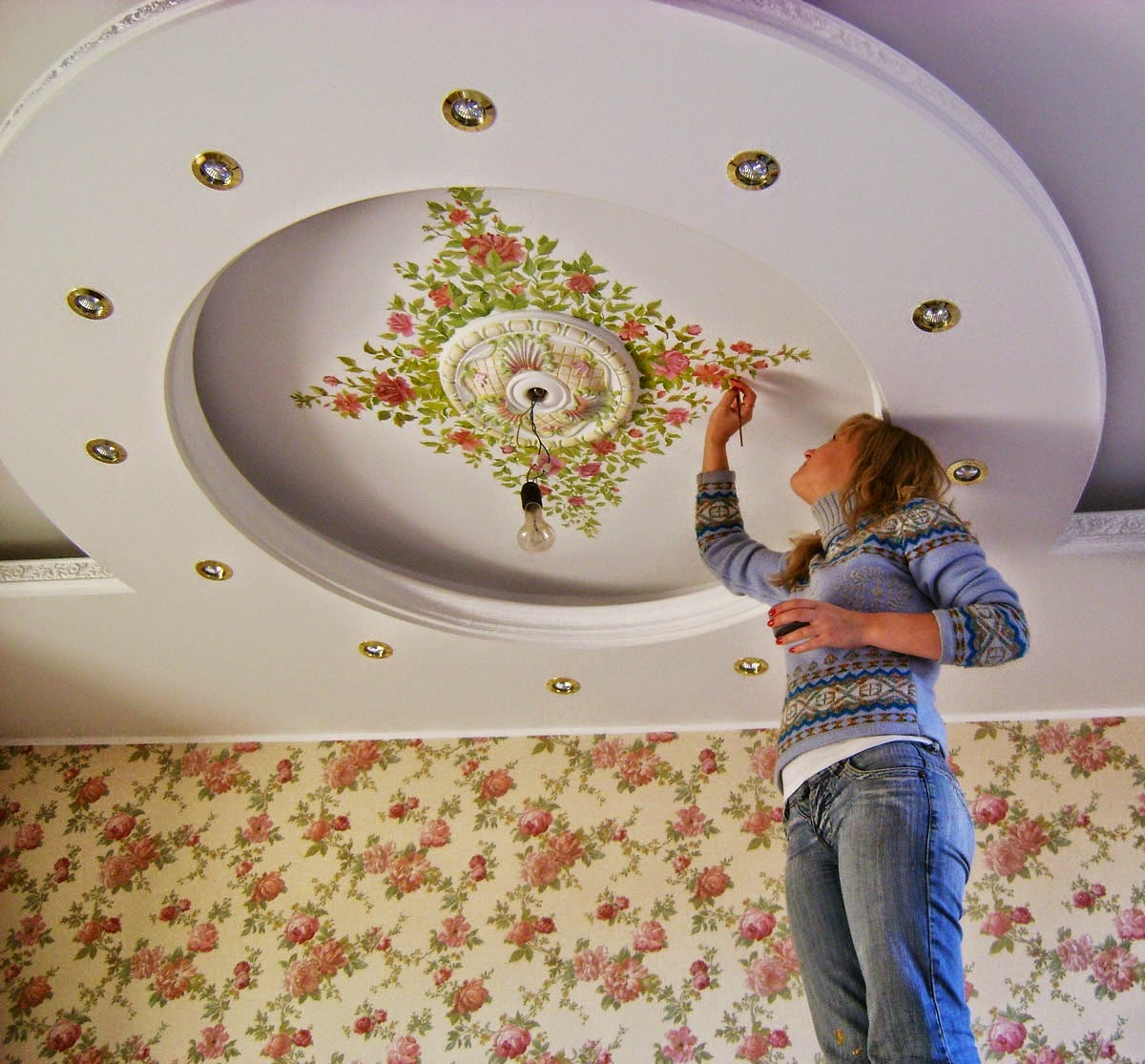

Articles
How To Decorate A Ceiling
Modified: October 20, 2024
Learn creative techniques and tips to beautifully decorate your ceiling with our informative articles. Enhance the visual appeal of any space with these helpful expert recommendations.
(Many of the links in this article redirect to a specific reviewed product. Your purchase of these products through affiliate links helps to generate commission for Storables.com, at no extra cost. Learn more)
Introduction
When it comes to home decor, the ceiling is often overlooked. Most people focus on the walls, furniture, and flooring, forgetting about the fifth wall that can significantly impact the overall look and feel of a room. However, with the right techniques and ideas, you can transform your plain and uninspiring ceiling into a stunning focal point that adds depth, character, and style to any space.
In this article, we will explore various strategies and tips on how to decorate a ceiling effectively. Whether you want to create a cozy and intimate atmosphere, a luxurious and elegant vibe, or a playful and whimsical ambiance, there are plenty of options to suit your personal taste and interior design style.
Before diving into the specifics, it’s important to note that the type of ceiling you have will influence the available decorating options. While some techniques are applicable to all types of ceilings, others might be more suitable for specific materials like plaster, drywall, or wood. Take into consideration the structural integrity and limitations of your ceiling before implementing any changes.
Now, without further ado, let’s explore the various ways you can elevate the look of your ceiling and turn it into a captivating feature of your home.
Key Takeaways:
- Elevate your space by transforming your ceiling into a stunning focal point with the right color, furniture placement, lighting, and creative decor ideas.
- Unleash your creativity and showcase your personal style by turning your ceiling into a work of art with murals, greenery, and unique architectural elements.
Read more: Ceiling Sensations: Look Up For Inspiration
Choosing the Right Ceiling Color
When it comes to decorating a ceiling, one of the most impactful decisions you can make is choosing the right color. The color of your ceiling can dramatically affect the perception of space, the overall ambiance of the room, and even the height of the ceiling itself. Here are some tips to help you make the right choice:
1. Stick with White: If you’re unsure about which color to choose, you can’t go wrong with a classic white ceiling. White ceilings create a sense of openness and make the room feel brighter and more spacious. They also provide a blank canvas for other elements in the room to stand out.
2. Go Bold: If you’re feeling adventurous and want to make a statement, consider painting your ceiling in a bold color. Deep blues, rich greens, or even vibrant yellows can add a pop of personality and create a unique and eye-catching look. Just make sure the color complements the overall color scheme of the room.
3. Lighter Shades: If you have a smaller room or a low-ceilinged space, opt for lighter shades of paint. Light colors, such as pale blues, soft grays, or even pastel shades, can create the illusion of height and make the ceiling appear higher than it actually is.
4. Darker Shades: On the other hand, if you have a room with high ceilings, you might want to experiment with darker shades. Deep navy blues, charcoal grays, or even rich browns can add a sense of coziness and intimacy to the space, making it feel more inviting.
5. Consider the Room’s Function: The function and purpose of the room can also influence your choice of ceiling color. For instance, if you’re decorating a bedroom or a relaxation space, consider using calming and soothing colors like soft pastels or warm neutrals. For a home office or a creative space, you might want to opt for energizing colors like vibrant greens or stimulating yellows.
Remember, the ceiling color should enhance the overall design and atmosphere of the room. Take into account the existing color palette and the style you want to achieve. Don’t be afraid to experiment and get creative with different shades and finishes to create a visually captivating ceiling that complements your overall interior design.
Furniture and Accessories Placement
Once you’ve chosen the perfect color for your ceiling, it’s time to consider the placement of furniture and accessories to enhance the overall visual impact. Here are some tips to help you make the most of your ceiling decor:
1. Furniture Height: Pay attention to the height of your furniture pieces in relation to the ceiling. Taller furniture, such as bookshelves or display cabinets, can draw the eye upward and create a sense of verticality. This can make the ceiling appear higher and more spacious. On the other hand, low-profile furniture can create a cozy and intimate feel.
2. Lighting Fixtures: Hanging light fixtures like chandeliers or pendant lights can not only provide functional lighting but also serve as a decorative element that draws attention to the ceiling. Choose fixtures that complement the style and color scheme of the room. Consider installing dimmers to adjust the brightness and create different moods.
3. Wall Decor: Strategically placing wall decor can help direct the eye towards the ceiling. Hanging large artworks, mirrors, or even tapestries can create a vertical focal point that emphasizes the height of the room. Ensure that the scale and proportion of the artwork are proportional to the size of the wall and ceiling.
4. Shelving: Install floating shelves or built-in bookshelves that reach up towards the ceiling. This not only provides additional storage space but also draws attention upwards, making the ceiling appear taller. Displaying decorative items, such as plants or sculptures, on these shelves can further enhance the visual impact.
5. Curtains and Drapes: Choose curtains or drapes that hang from ceiling height to the floor. This elongates the walls and gives the impression of a higher ceiling. Opt for lightweight fabrics that allow natural light to filter through, creating an airy and spacious atmosphere.
6. Room Dividers: If you have an open plan space or a large room, consider using room dividers to create separate zones. Floor-to-ceiling partitions or screens can add architectural interest to the room and draw attention upwards. Choose dividers with interesting patterns or textures to add visual intrigue to the ceiling area.
Remember, the key is to strike the right balance between creating visual interest on the ceiling without overwhelming the space. Experiment with different furniture and accessory placements to find the arrangement that best enhances the overall aesthetics of the room while highlighting your decorated ceiling.
Accent Lighting and Fixtures
When it comes to decorating a ceiling, lighting plays a crucial role in highlighting its features and creating a captivating ambiance. Here are some ideas for incorporating accent lighting and fixtures to enhance the visual appeal of your ceiling:
1. Cove Lighting: Cove lighting is an excellent way to add indirect lighting that washes over the ceiling and creates a soft, ambient glow. This type of lighting is typically installed in a recessed area near the ceiling, hidden from direct view. It can be used to highlight architectural features, such as crown moldings or tray ceilings, and create a sense of depth and dimension.
2. Pendant Lights: Pendant lights are versatile lighting fixtures that can be used to draw attention to the ceiling while providing task or ambient lighting. Hang a cluster of pendant lights at different heights to create an interesting focal point. Choose fixtures with unique shapes, materials, or colors that complement the style of the room.
3. Spotlights and Track Lighting: Spotlights and track lighting allow you to direct focused light onto specific areas of the room or highlight architectural details on the ceiling. Use them to accentuate artwork, sculptures, or decorative elements. Adjust the angle and intensity of the lights to create the desired effect.
4. Chandeliers: Chandeliers are a classic lighting choice that can add elegance and grandeur to any space. Choose a chandelier that suits the style and scale of the room. Hang it centrally to create a focal point, or position multiple smaller chandeliers along the length of a hallway or over a dining table for a dramatic effect.
5. Rope Lighting: Rope lighting is a creative and cost-effective way to add a touch of whimsy to your ceiling decor. It comes in various colors and can be easily installed in coves or along the perimeter of the ceiling. Use rope lighting to create geometric patterns, outline architectural elements, or add a soft, ambient glow to the room.
6. Wall Sconces: Wall sconces not only provide additional lighting but can also serve as decorative elements that draw the eye upwards. Install sconces on the wall near the ceiling to create a vertical visual effect and highlight textured or painted ceilings. Choose sconces with unique designs or materials that match the overall style of the room.
Remember to consider the functionality and purpose of the room when choosing lighting fixtures. Utilize a combination of different types of lighting to create layers of illumination that cater to various needs, such as ambient, task, and accent lighting. Experiment with different fixture styles, placements, and light intensities to achieve the desired effect and showcase your beautifully decorated ceiling.
Textured Paint or Wallpaper
Adding texture to your ceiling can instantly transform an ordinary space into something extraordinary. Textured paint or wallpaper is a fantastic way to create depth, visual interest, and a unique focal point. Here are some ideas on how to incorporate textured elements into your ceiling decor:
1. Textured Paint: Consider using textured paint to add dimension and character to your ceiling. There are various techniques you can try, such as stippling, sponging, or even using a textured roller. These techniques create different patterns and textures that can mimic the look of stucco, plaster, or even fabric. Choose a paint color and texture that complements the overall theme of the room.
2. Wallpaper: Wallpaper is another fantastic option for adding texture to your ceiling. There are a wide range of textured wallpapers available, such as grasscloth, faux brick, or embossed designs. Opt for wallpapers that are specifically designed for ceilings, as they are often more lightweight and easier to install. Consider using metallic or reflective wallpapers to create a luxurious and opulent feel.
3. Ceiling Tiles: If you prefer a more structured and uniform texture, consider using ceiling tiles. These tiles come in a variety of patterns, from intricate designs to simple geometric shapes. They can be made from materials like tin, foam, or even lightweight PVC. Ceiling tiles are a great option if you want to add architectural interest or replicate the look of a vintage or industrial-inspired space.
4. Beadboard Paneling: Beadboard paneling is a type of textured wall covering made up of narrow planks with a rounded groove between them. It’s a popular choice for adding a charming and rustic touch to ceilings. Beadboard can be painted in any color you desire, allowing you to customize the look to match your overall decor theme. It works particularly well in cottage-style or coastal-inspired interiors.
5. Textured Fabric: For a unique and unconventional approach, consider using fabric to create a textured ceiling. Stretch fabric over the surface of the ceiling and secure it in place. This method allows for infinite possibilities in terms of patterns, colors, and textures. Opt for lightweight fabrics that are easy to work with and ensure proper installation for a smooth and wrinkle-free appearance.
When using textured paint or wallpaper, be sure to consider the existing elements in the room, such as the walls, flooring, and furniture, to create a cohesive and harmonious look. The texture you choose can add visual interest and create a focal point, so explore different options and unleash your creativity to achieve a stunning textured ceiling that elevates the overall design of your space.
Ceiling Medallions and Moldings
If you want to add a touch of elegance and sophistication to your ceiling, consider incorporating ceiling medallions and moldings. These decorative elements can transform a plain and ordinary ceiling into a stunning architectural feature. Here are some ideas on how to use ceiling medallions and moldings to enhance your ceiling decor:
1. Ceiling Medallions: Ceiling medallions are circular ornamental discs that are typically installed around light fixtures or ceiling fans. They serve as a decorative centerpiece and add a touch of elegance to the ceiling. Choose medallions that are proportional to the size of the room and the height of the ceiling. Opt for intricate designs or ones that complement the overall style of the room.
2. Crown Moldings: Crown moldings are decorative trims that are installed where the wall meets the ceiling. They add a touch of sophistication and can visually elevate the height of the room. Crown moldings come in various styles, from simple and streamlined to intricate and ornate. Choose a design that complements the overall aesthetics of the room and the architectural style of your home.
3. Panel Molding: Panel molding is a versatile decorative trim that can be used to create a variety of design elements on the ceiling. It can be installed in rectangular or square patterns to mimic the look of traditional raised paneling. Panel molding adds depth and visual interest to the ceiling, creating a more luxurious and customized look. Consider painting the panels in contrasting colors for a bold statement.
4. Ceiling Cornices: Cornices are decorative elements that form a transition between the walls and the ceiling. They add architectural detail and create a cohesive look. Cornices can be simple or elaborate, depending on your design preferences. They can be used to enhance the visual impact of ceiling medallions or moldings by creating a frame around them.
5. Tray Ceilings: Tray ceilings are recessed or stepped ceilings that create a multi-layered effect. They offer a unique opportunity to incorporate ceiling medallions and moldings. Install a ceiling medallion in the center of the tray ceiling to create a striking focal point. Use moldings to highlight the different levels and add architectural interest and depth.
6. Paint or Stain: To further enhance the impact of ceiling medallions and moldings, consider painting or staining them in a contrasting color to the ceiling or the walls. This will make them stand out and create a more dramatic effect. Make sure to choose colors that complement the overall color scheme of the room and the style you want to achieve.
Ceiling medallions and moldings are excellent ways to add personality and architectural character to your ceiling. They create a sense of grandeur and give the room a polished and finished look. Experiment with different designs, sizes, and finishes to find the perfect combination that suits your style and enhances the overall decor of your space.
Consider using a combination of ceiling medallions, moldings, and paint to add dimension and visual interest to your ceiling. This can create a unique and elegant look in any room.
Statement Ceilings
A statement ceiling is a fantastic way to make a bold and impactful design statement in any room. Gone are the days of plain and neglected ceilings – now, it’s all about turning that fifth wall into a stunning focal point. Here are some ideas on how to create a statement ceiling that will leave a lasting impression:
1. Wallpaper or Mural: Use bold and vibrant wallpaper or a ceiling mural to instantly transform your ceiling. Choose a design that complements the overall style of the room – whether it’s a tropical paradise, a starry night sky, or a whimsical pattern. This approach adds a layer of intrigue and personality to the space, making it truly unique.
2. Painted Patterns: Create eye-catching patterns directly on your ceiling using paint. Stripes, chevron, geometric shapes, or intricate designs can instantly elevate the space. Consider using a complementary color scheme or a striking contrast to make the patterns stand out. This technique is particularly effective in rooms with high ceilings.
3. Architectural Details: Incorporate architectural details, such as coffered ceilings, exposed beams, or vaulted ceilings, to create a statement. These elements add visual interest and dimension to the room. Highlight them with paint or stain to create a dramatic effect or keep them in their natural state for a rustic and authentic look.
4. Metal Accents: If you’re aiming for a modern and luxurious aesthetic, consider adding metal accents to your ceiling. Install metal tiles, strips, or panels to create a stunning metallic surface that catches the light. The shimmer and shine of metal can instantly elevate the space and create a glamorous atmosphere.
5. Wood Paneling: Add warmth and sophistication to your ceiling by installing wood paneling. Whether it’s tongue and groove, reclaimed wood planks, or wooden beams, this thoughtful addition can create a rustic or farmhouse charm. Consider staining or painting the wood to match the overall color scheme of the room.
6. Ceiling Artwork: Hang artwork directly on the ceiling to make a statement. Whether it’s a collection of framed art pieces, hanging sculptures, or even a fabric tapestry, this unexpected placement will captivate attention and create a unique visual impact.
Remember, a statement ceiling should reflect your personal style and enhance the overall character of the room. Consider the existing elements in the space, such as furniture, flooring, and wall colors, to create a cohesive and harmonious look. Push the boundaries of conventional design and experiment with different techniques to create a ceiling that is truly one-of-a-kind.
Skylights and Windows
When it comes to decorating a ceiling, natural light can be a powerful tool for creating an open and airy atmosphere. Skylights and windows not only bring in natural light, but they also provide a unique opportunity to enhance your ceiling decor. Here are some ideas for incorporating skylights and windows into your ceiling design:
1. Skylights: Skylights are a fantastic way to bring abundant natural light into a room while adding a striking architectural feature to the ceiling. They can be installed in various shapes and sizes, from rectangular to circular, to suit the design aesthetic of the space. Skylights can create a sense of openness and a connection to the outdoors, making the room feel more expansive and inviting.
2. Vaulted Ceilings: If you have the opportunity, consider creating a vaulted ceiling with skylights. This design allows for a dramatic and spacious feel, as well as an abundance of natural light from above. Vaulted ceilings can add depth and dimension to a room, making it feel grand and luxurious.
3. Window Walls: Floor-to-ceiling windows that extend all the way to the ceiling are an excellent way to create a seamless connection between the indoors and outdoors. They provide a panoramic view, flood the space with natural light, and make the ceiling appear higher. Use window treatments sparingly to maintain the open and expansive feel.
4. Lightwell: A lightwell is a vertical shaft that brings natural light from a higher level into a lower level, such as a basement or a ground floor room. By installing a skylight or a window at the top of the lightwell, you can create a unique and captivating feature that fills the room with natural light.
5. Window Trim and Molding: Enhance the visual impact of your windows and skylights by adding decorative trim and molding. Crown molding, cornices, or intricate details around the window frames can add sophistication and elegance to the overall design. Choose trim that is proportional to the size of the window and complements the style of the room.
6. Window Seats: If you have windows or skylights with lower sills, consider adding a window seat underneath. This creates a cozy and inviting nook where you can relax, read a book, or simply enjoy the view. Enhance the seat with plush cushions, throw pillows, and accent lighting to make it a focal point of the room.
Skylights and windows are not only functional features that bring in natural light but also opportunities to enhance your overall ceiling decor. They can elevate the aesthetic of the room, create a sense of connection to the outdoors, and make the space feel larger and more vibrant. Incorporate these elements thoughtfully into your ceiling design to create a beautiful and well-lit space.
Ceiling Murals or Artwork
One of the most unique and captivating ways to decorate a ceiling is by incorporating murals or artwork. Adding a stunning painting or mural to the ceiling can transform a plain and overlooked surface into a breathtaking visual masterpiece. Here are some ideas on creating remarkable ceiling murals or artwork:
1. Frescoes: Frescoes are traditional paintings created directly on wet plaster. This technique has been used for centuries to adorn ceilings with intricate and detailed artwork. Consider hiring a skilled artist or muralist who specializes in frescoes to create a custom piece that complements the style and theme of your room. The result will be a timeless and awe-inspiring work of art.
2. Trompe-l’oeil: Trompe-l’oeil is a technique that uses realistic imagery to create the illusion of three-dimensional objects or scenes. This technique can be particularly effective on ceilings, as it can make the surface appear to be open to the sky or create the impression of architectural elements, such as arches or domes. Trompe-l’oeil murals add depth and drama to the room, making it feel larger and more grandiose.
3. Sky Murals: Transform your ceiling into a breathtaking sky view by painting a mural that resembles the sky. Whether it’s a clear blue sky with fluffy white clouds, a starry night sky, or a whimsical and colorful sky, this type of mural can create a sense of peace, tranquility, and wonder. It’s a fantastic option for bedrooms, nurseries, or relaxation spaces.
4. Nature Inspired: Bring the beauty of nature indoors by painting a mural that depicts a natural scene on the ceiling. Whether it’s a lush forest, an underwater paradise, or a serene beach landscape, nature-inspired murals can create a calming and peaceful ambiance. Consider adding birds, butterflies, or other wildlife to enhance the realism and visual interest.
5. Contemporary and Abstract: If you prefer a more modern and artistic approach, consider commissioning a contemporary or abstract mural for your ceiling. This type of artwork can add a bold, dynamic, and eclectic vibe to the room. Choose colors, shapes, and patterns that reflect your personal taste and complement the overall decor.
6. Custom Artistic Expression: For a truly unique and personal touch, collaborate with an artist to create a custom ceiling mural that reflects your individual style and interests. This could be a representation of your favorite artwork, a meaningful quote, or a personal symbol. Let your imagination run wild and create a visually stunning and highly personal piece of art.
When incorporating ceiling murals or artwork, consider the positioning and scale of the artwork in relation to the room’s layout and decor. Additionally, ensure that the lighting of the room properly showcases the artwork and creates the desired atmosphere. A well-executed and thoughtfully chosen ceiling mural or artwork can truly transform your space into a show-stopping masterpiece.
Greenery and Hanging Plants
Adding greenery and hanging plants to your ceiling not only enhances the aesthetic appeal but also brings life and vibrancy to the space. The natural beauty of plants can soften the look of a room and create a fresh and inviting atmosphere. Here are some ideas on incorporating greenery and hanging plants into your ceiling decor:
1. Hanging Planters: Install hanging planters from the ceiling to create a stunning display of cascading foliage. Choose plants with trailing vines, such as pothos, philodendron, or spider plants, that can gracefully drape down from the planter. Hang the planters at varying heights, allowing the plants to create a lush and dynamic canopy effect.
2. Macrame Plant Hangers: Embrace the bohemian trend by using macrame plant hangers to suspend your plants from the ceiling. The intricate knotting and textures of macrame add visual interest and create a unique focal point. Hang plants with colorful leaves or flowers to enhance the overall aesthetic. You can even create a cluster of macrame hangers for a captivating display.
3. Vertical Gardens: Create a vertical garden on your ceiling by attaching panels or frames to hang pots or plant pockets. This allows you to maximize the space and create a lush green display. Choose plants with a variety of shapes, sizes, and textures to create a visually interesting and dynamic living mural.
4. Air Plants: Air plants are perfect for adding a touch of greenery to your ceiling without the need for soil or large planters. Tillandsias, or air plants, can be displayed in hanging glass terrariums or attached to driftwood or other decorative elements suspended from the ceiling. They are low-maintenance and add a unique and modern flair to your ceiling decor.
5. Herbal Hanging Baskets: Incorporate functional greenery into your ceiling decor by hanging herbs in baskets. This not only adds a touch of green but also provides easy access to fresh herbs for cooking. Basil, thyme, rosemary, and mint are excellent choices for hanging baskets, as they tolerate the drier conditions typically found near the ceiling.
6. Trailing Plants on Shelves: If you have open shelves or bookshelves near the ceiling, utilize the space by showcasing trailing plants on the top shelves. This not only adds greenery to the ceiling level but also draws the eye upwards and creates a lush and visually appealing display. Choose plants with long, cascading vines, such as philodendron or string of pearls.
Ensure that you consider the structural integrity of your ceiling and choose appropriate hanging methods for your plants. Integrate greenery that suits the lighting conditions and humidity levels of the room. With the right selection of plants and creative hanging techniques, your ceiling will be transformed into a verdant and enchanting oasis.
Conclusion
Decorating a ceiling is often an overlooked aspect of interior design, yet it presents a tremendous opportunity to elevate the look and feel of any space. By implementing the right strategies, you can transform a plain and uninspiring ceiling into a stunning focal point that adds depth, character, and style to your room.
From choosing the right ceiling color to incorporating furniture and accessories, accent lighting, textured paint or wallpaper, ceiling medallions and moldings, statement ceilings, skylights and windows, ceiling murals or artwork, and greenery and hanging plants, there are numerous ways to enhance your ceiling and create a visually captivating space.
Each of these techniques offers its unique touch and allows you to showcase your personal style and creativity. From classic and elegant to modern and eclectic, you have the flexibility to choose the approach that best suits your taste and complements the overall design of your room.
Remember to consider the existing elements in the room, such as furniture, flooring, and wall colors, to create a harmonious and cohesive look. Strive for balance and moderation, ensuring that your ceiling decor enhances the overall aesthetics without overpowering the space.
By incorporating these ideas, you can transform your ceiling into a work of art that seamlessly integrates with the rest of your interior design. Enhancing your ceiling not only adds visual interest but also creates a more dynamic and inviting atmosphere for you and your guests to enjoy.
So, embrace creativity, experiment with different techniques, and let your ceiling become a canvas for your unique expression. With the right approach, your ceiling can be a stunning and captivating feature that takes your home decor to new heights.
If you've found inspiration in different ceiling decorating ideas, you might wonder about the specifics of ceiling color coordination. Delving into whether ceilings should match wall hues could further refine your design choices. Our dedicated guide on ceiling paint offers insights and considerations for maintaining aesthetic harmony in your home. Curious about the impact of color continuity? Check out our article for expert advice and stylish ideas.
Frequently Asked Questions about How To Decorate A Ceiling
Was this page helpful?
At Storables.com, we guarantee accurate and reliable information. Our content, validated by Expert Board Contributors, is crafted following stringent Editorial Policies. We're committed to providing you with well-researched, expert-backed insights for all your informational needs.


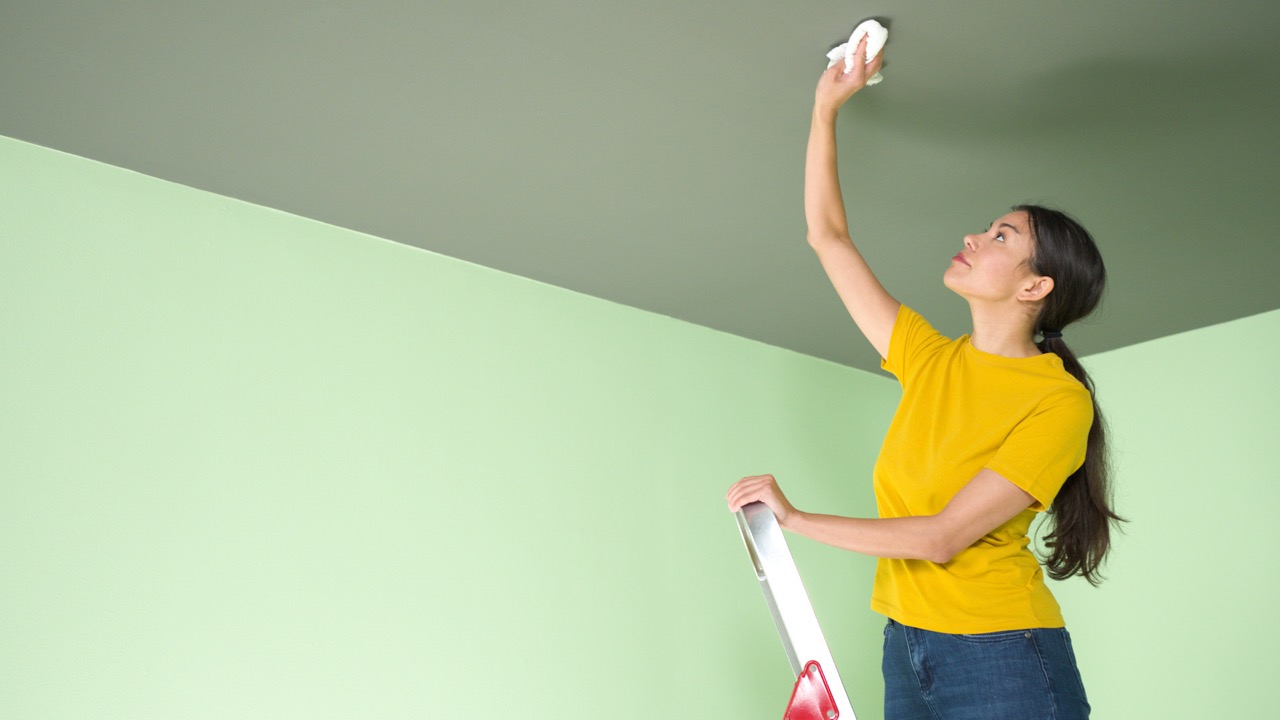


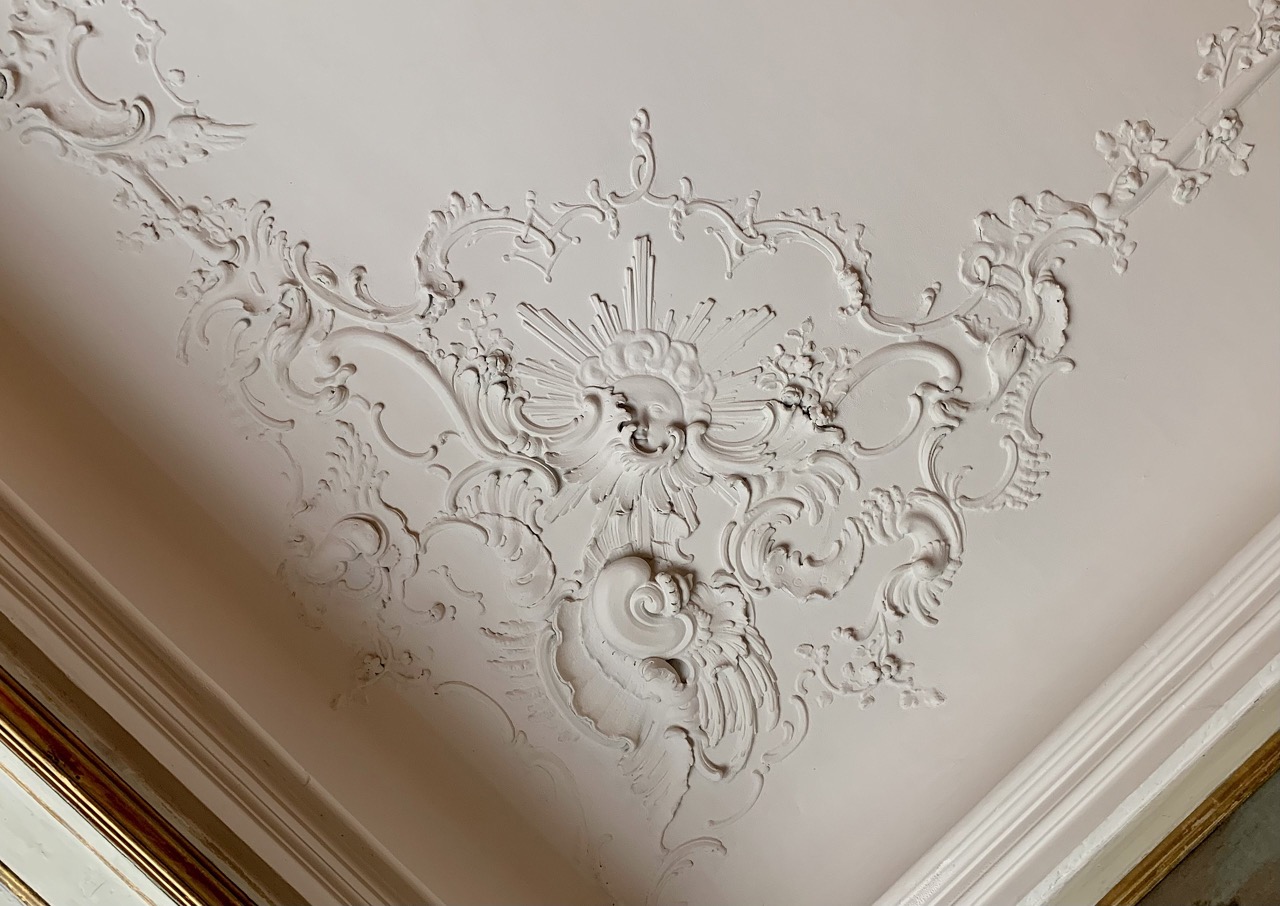
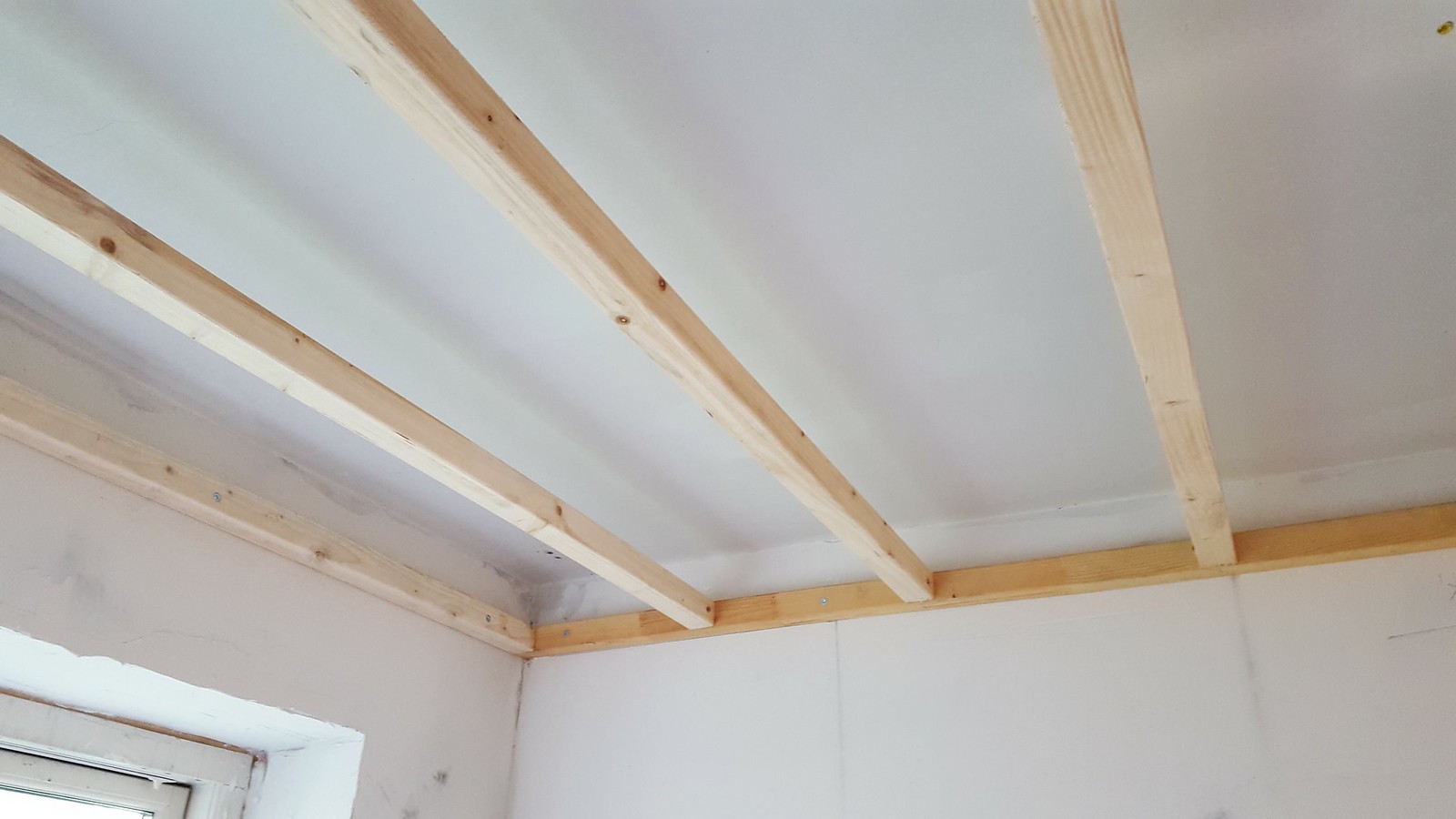
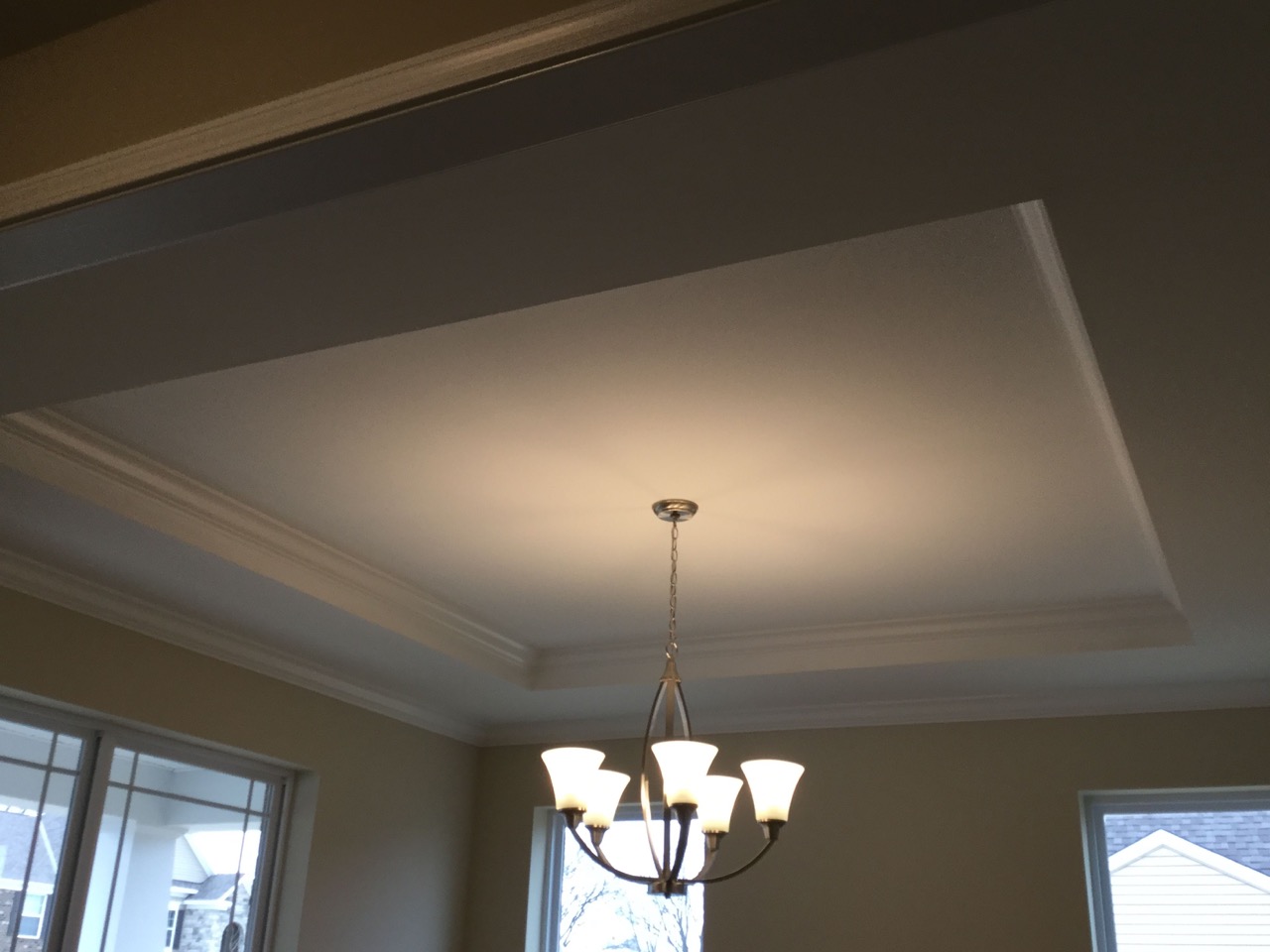

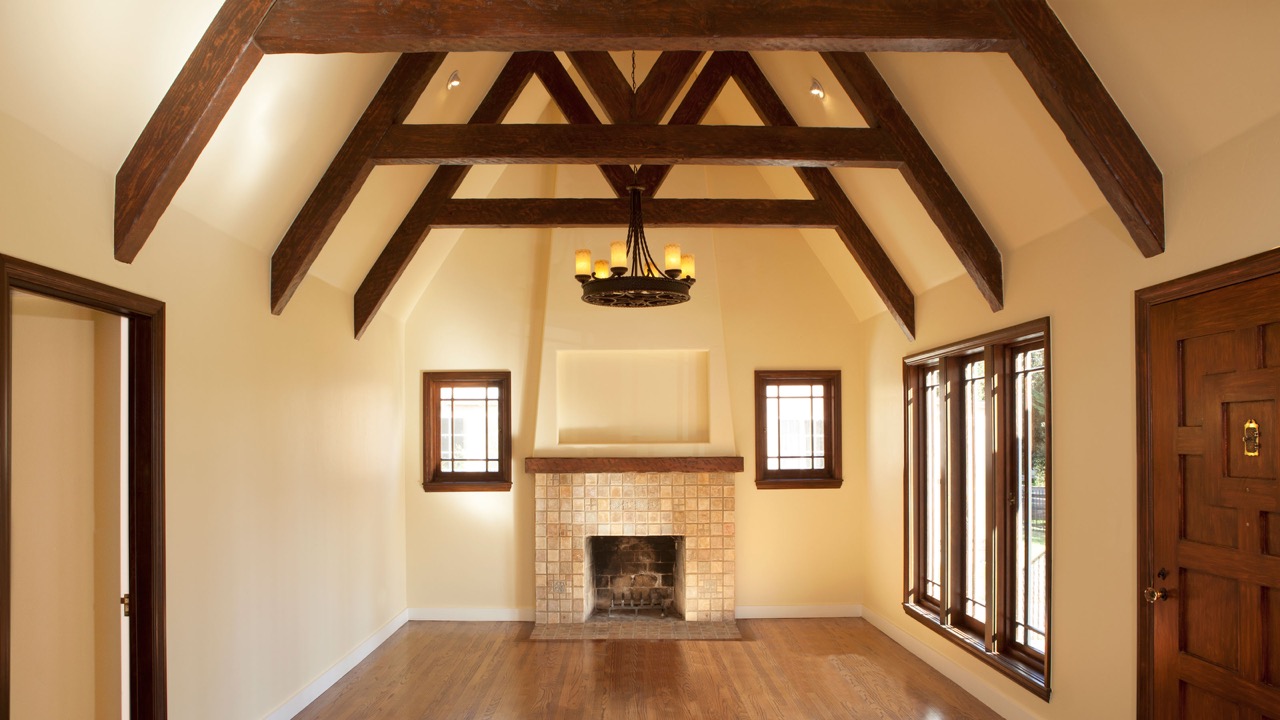

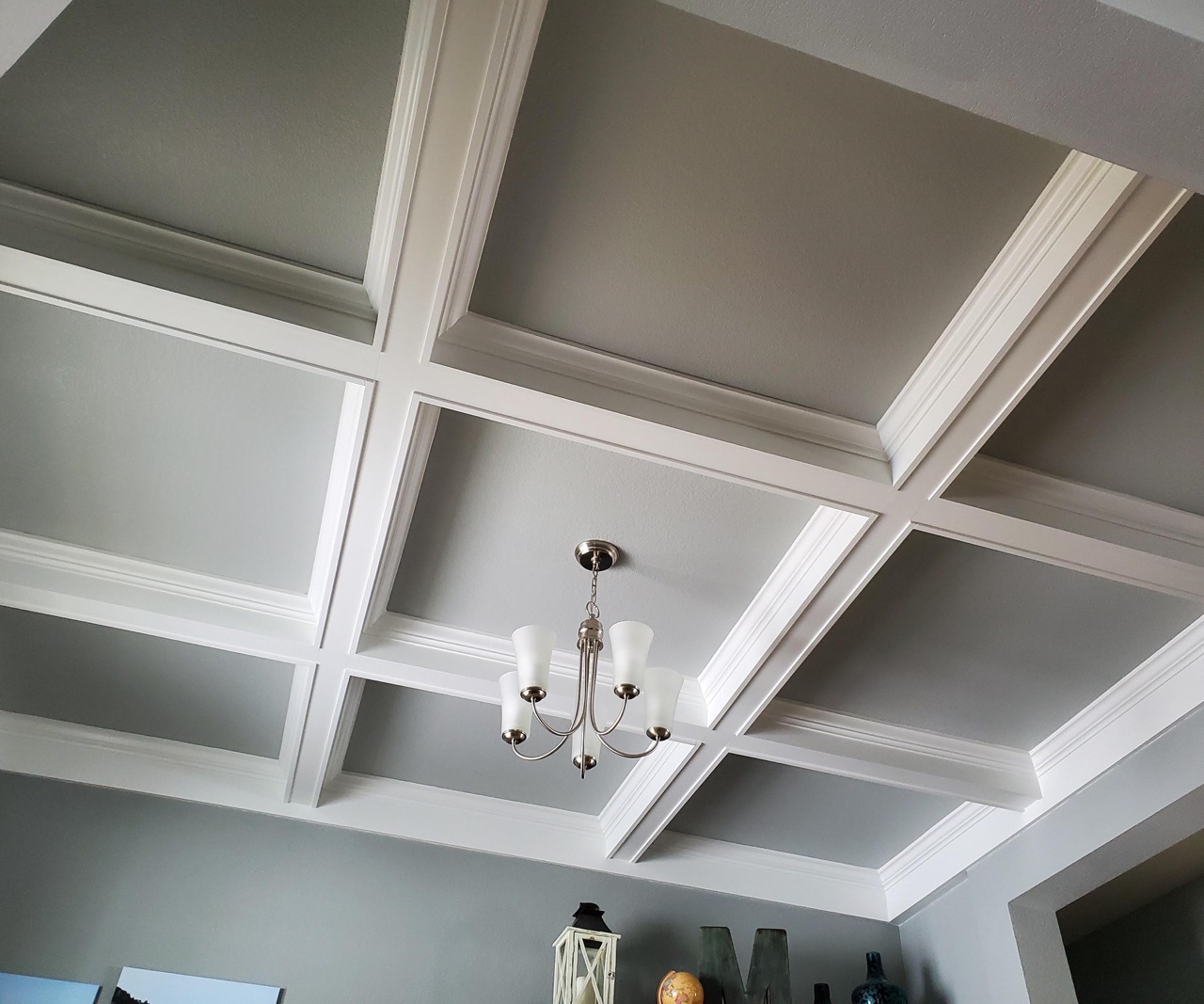
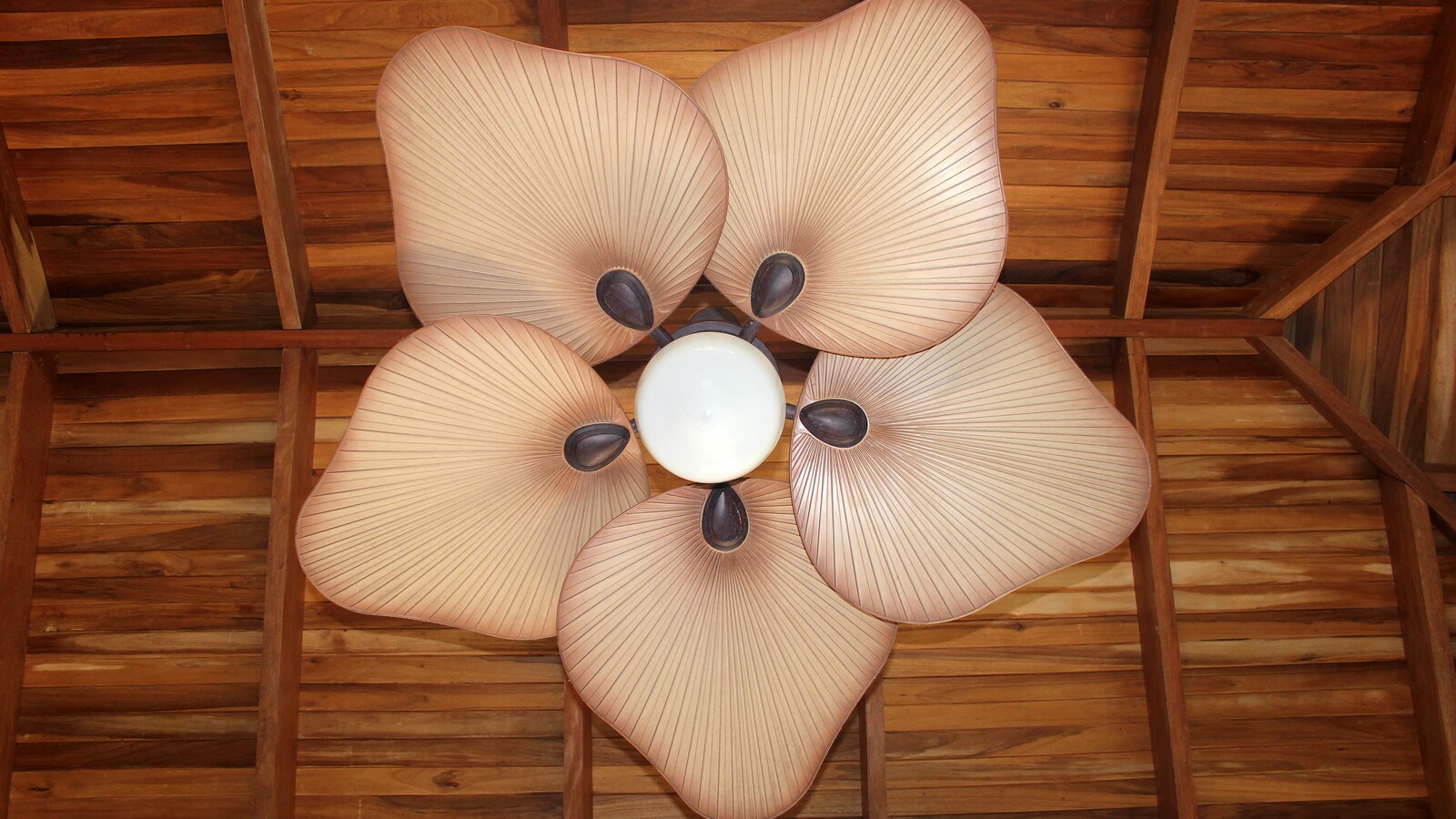

0 thoughts on “How To Decorate A Ceiling”